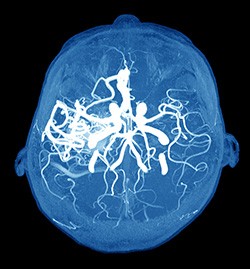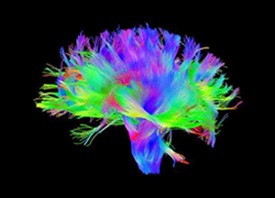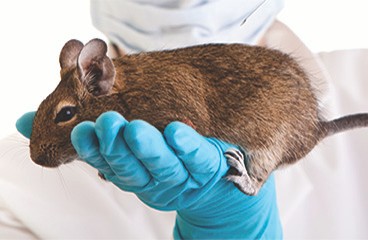Neuroscientists Identify Pathways in Learning

By Lisa Jancarik
Carnegie Mellon University researchers recently published work in the Journal of Neuroscience demonstrating structural and functional pathways in the human brain that are associated with reinforcement learning. The research was headed by Timothy Verstynen, faculty member in the Center for the Neural Basis of Cognition (CNBC) in CMU's Dietrich College of Humanities and Social Sciences, and Graduate student Kevin Jarbo collaborated. Their study was special because it considered the role of spatial information in learning tasks, like hitting a baseball with a bat.
Sixty healthy adults volunteered to have their brains imaged for this study. Diffusion spectrum imaging and fiber technology allowed the neuroscientists to visualize the structural connectivity of specific regions of interest. The researchers then used fMRI (functional MRI) to verify a functional relationship among these convergence zones.
The particular pathways studied were the dorsolateral prefrontal (DLPFC), orbitofrontal cortex (OFC) and posterior parietal cortex (PPC). The DLPFC is thought to be associated with working memory, while the OFC is generally associated with the ability to choose behavior based on anticipated positive or negative reinforcements. The group's results showed that these white matter regions of the brain consistently connect to the striatum in the basal ganglia. These same pathways have a role in Parkinson's disease—specifically the basal ganglia region, which is associated with involuntary movements, like Parkinson tremors.
Broader Insights into Learning

This team's basic research provides insight into the general learning process. Other work has shown a convergence of signals from the OFC to other regions of the prefrontal cortex. Verstynen's group is the first to demonstrate that spatial attention information from the parietal cortex may also figure into the reinforcement learning process.
“Our findings suggest that there may be a structural and functional network in the brain that allows us to integrate information about where we are focusing our attention in our visuospatial environment with reward and punishment signals associated with our past action choices, resulting in an our ability to learn how to update, and hopefully improve, our future action decisions,” Jarbo said.
Furthermore, research by Verstynen's team may lead to therapies for diseases like Parkinson’s, to help strengthen weakened or damaged pathways.
Verstynen said of his group's work, "By understanding precisely how these systems communicate together, we can get a better grasp for how they operate in the healthy brain. But we can also start to understand how, in Parkinson's disease, different types of systems “cascade”, starting with one symptom, like motor dysfunction, and moving to another, such as memory or decision-making problems."
Read Your Mind? Maybe, If You’re a Rat

In unrelated research at Cold Spring Harbor, Professor Anthony Zador's research team has looked not at specific regions of the human brain, but instead at specific neurons in the brains—of rats! Focusing their research on how rats translate sound cues into behavior, Zador's team taught rats to associate a particular tone with a reward located on either the right or the left side of a training box.
The team's previous work identified the specific neuronal population the rats needed to perform this task in the auditory cortex and the auditory striatum. The more recent work measured the strength of the connections between the neurons in these two regions, and found a gradient in activity dependent on whether the rat was taught to go left or right for the reward.
The team then used postmortem slices of the rat brains to guess how each rat had been trained, left or right.
"We were amazed that in all cases, our predictions—left or right—were correct. We had deciphered a tiny piece of the neural code with which the animal encoded these memories. In essence, we could read the minds of these rats," said Zador.